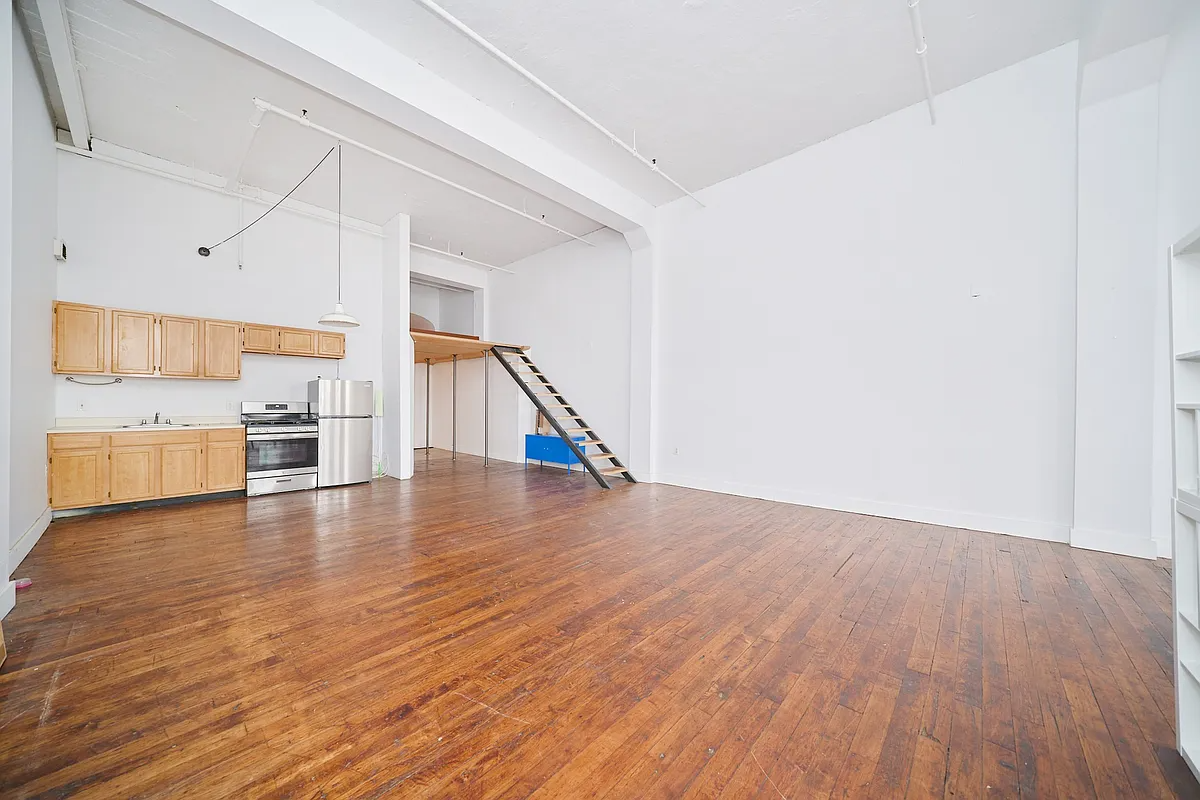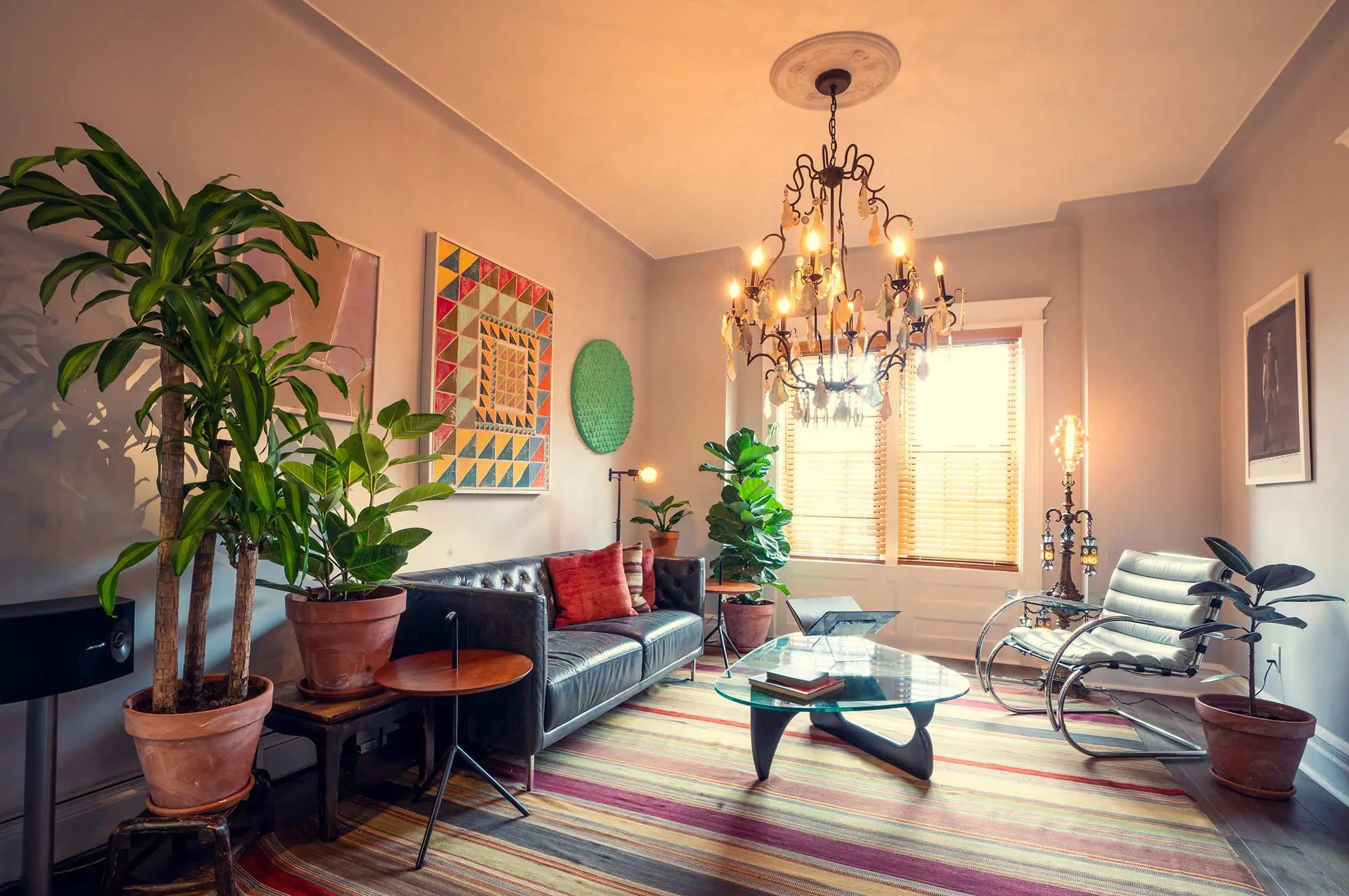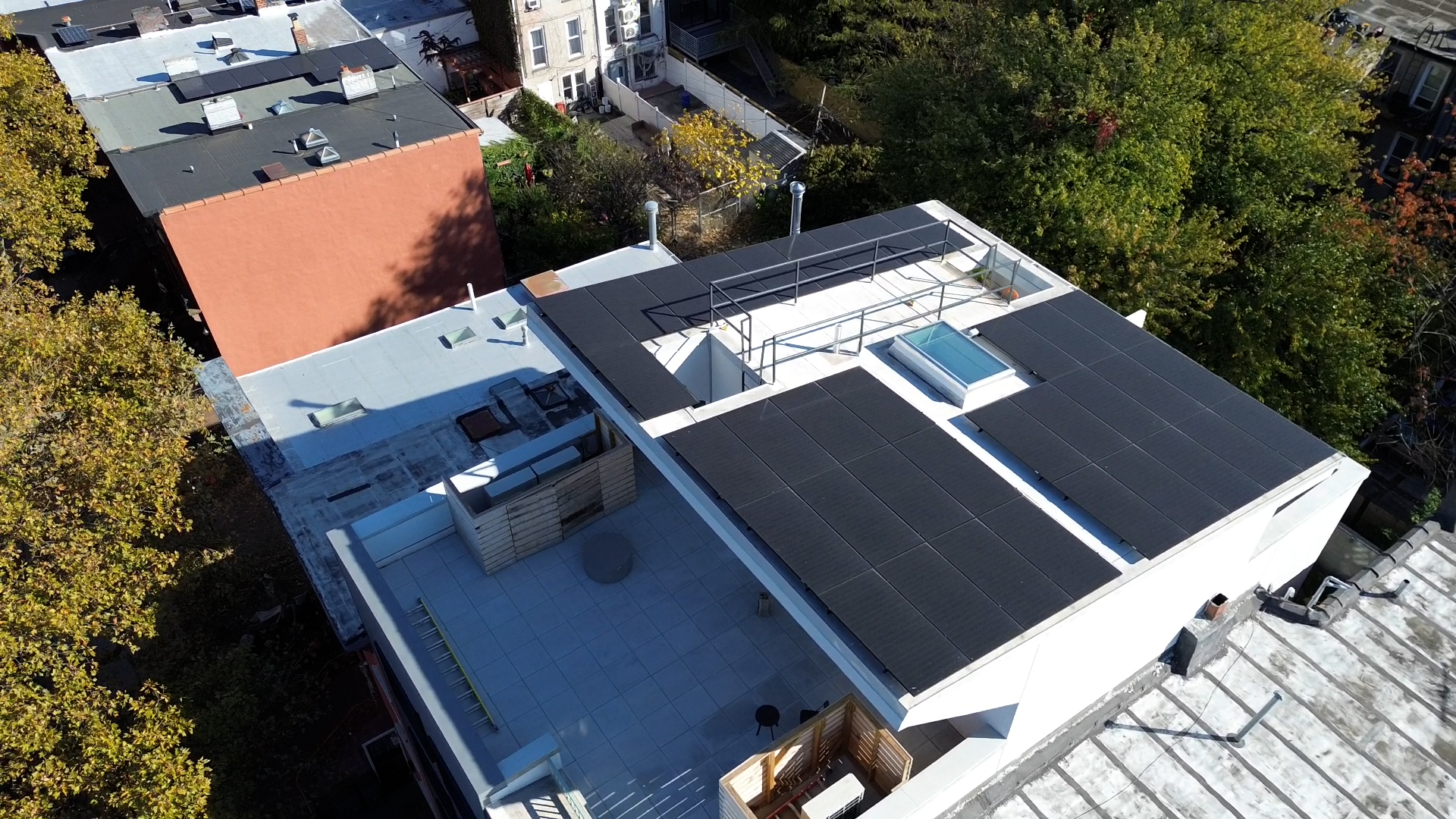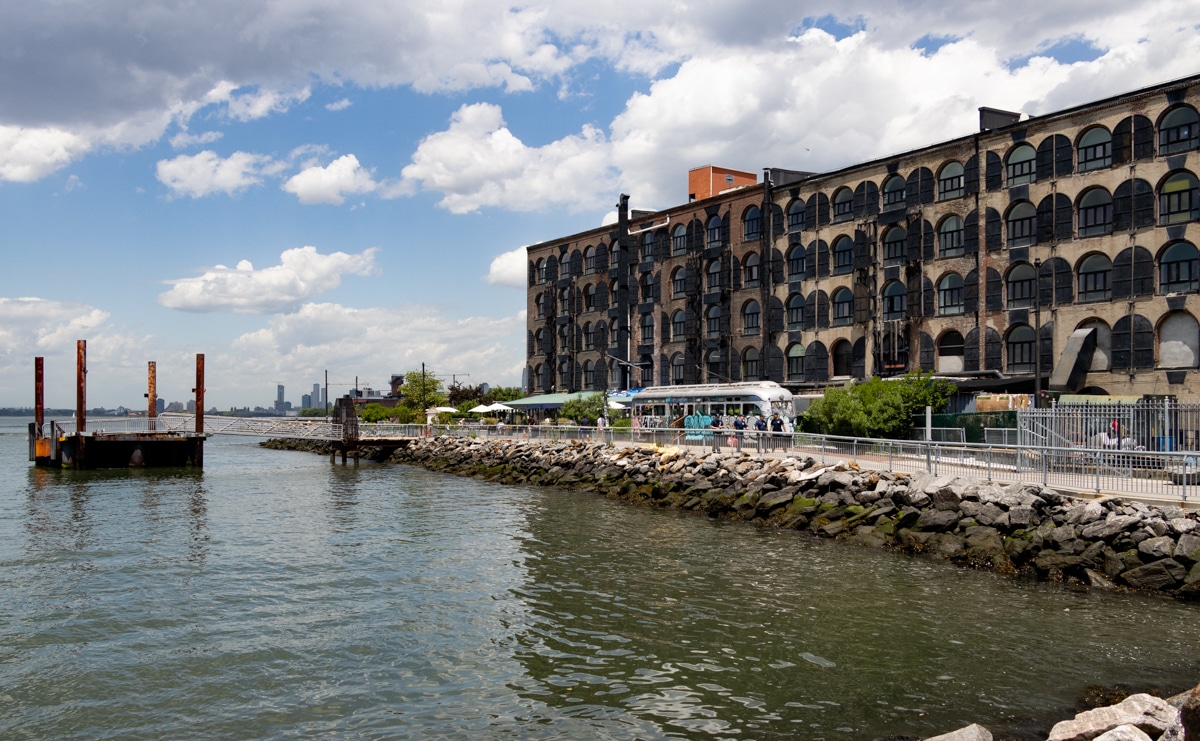W'burg Hotel Financing Up for Review, Debate
Two Trees, the Dumbo-based developer, bought the 41,000-square-foot warehouse at 80 Wythe Avenue in Williamsburg (shown here in a photo from a couple of years ago) in March 2009 for $6,000,000 with the intention of turning it into a boutique hotel. After sitting on the sidelines for the past year and half (except for trying…

 Two Trees, the Dumbo-based developer, bought the 41,000-square-foot warehouse at 80 Wythe Avenue in Williamsburg (shown here in a photo from a couple of years ago) in March 2009 for $6,000,000 with the intention of turning it into a boutique hotel. After sitting on the sidelines for the past year and half (except for trying to get approval to increase the building’s height), the developer is now vying for $15 million of federal tax-exempt financing through the New York City Capital Resource Corp. and with a hearing set for next Tuesday, reports the Wall Street Journal, the naysayers are coming out of the woodwork. One group, Good Jobs New York, is arguing that the city should only be promoting industrial jobs in this area and that the jobs generated in this hotel would not be high-quality enough. Two Trees’ Jed Walentas begged to differ. “I disagree that a hotel is not a productive thing to have there,” he told The Brooklyn Paper. “I think a hotel is an amazingly complimentary use.” NYCCRC awarded $20 million to a hotel project in Harlem earlier this year so there’s precedent for the funding, and given that this location is within spitting distance of fancy residential buildings makes it hard to argue that it’s an inappropriate use in our opinion (especially when it’s allowed as-of-right by the zoning!). Williamsburg is now an international tourist destination, like it or not, and it’s in the city’s best interest to be supporting businesses that solidify that position. Of course, whether the city should be helping to subsidize wealthy developers is a whole ‘nuther debate, but a nice hotel here makes sense to us.
Two Trees, the Dumbo-based developer, bought the 41,000-square-foot warehouse at 80 Wythe Avenue in Williamsburg (shown here in a photo from a couple of years ago) in March 2009 for $6,000,000 with the intention of turning it into a boutique hotel. After sitting on the sidelines for the past year and half (except for trying to get approval to increase the building’s height), the developer is now vying for $15 million of federal tax-exempt financing through the New York City Capital Resource Corp. and with a hearing set for next Tuesday, reports the Wall Street Journal, the naysayers are coming out of the woodwork. One group, Good Jobs New York, is arguing that the city should only be promoting industrial jobs in this area and that the jobs generated in this hotel would not be high-quality enough. Two Trees’ Jed Walentas begged to differ. “I disagree that a hotel is not a productive thing to have there,” he told The Brooklyn Paper. “I think a hotel is an amazingly complimentary use.” NYCCRC awarded $20 million to a hotel project in Harlem earlier this year so there’s precedent for the funding, and given that this location is within spitting distance of fancy residential buildings makes it hard to argue that it’s an inappropriate use in our opinion (especially when it’s allowed as-of-right by the zoning!). Williamsburg is now an international tourist destination, like it or not, and it’s in the city’s best interest to be supporting businesses that solidify that position. Of course, whether the city should be helping to subsidize wealthy developers is a whole ‘nuther debate, but a nice hotel here makes sense to us.
Hotel Plan Questioned [Wall Street Journal] GMAP
Two Trees Closes on W’burg Hotel Property [Brownstoner]
Question Marks for Walentas W’burg Hotel Bid [Brownstoner]





Hardship irrelevant, since the rezoning values have increases hugely and it was bought for what it could be bought for. If it was half the sale price they paid you still can’t do 10-12 rents. impossible.
the top group that displaces manufacturing are artists and live work uses # 1 by far
the loft law just took over sixty buildings out of service for manufacturing, that is the big kahuna, not something like this
central willie-b is a playground, the market is the force, not me or anyone i ever worked for (i also did 1000 units of affordable housing for City and an NPO)
concentrate on real options in BK like sunset park, condos and live work wiping out northern BK craft tenants, next round of slaughter comes in 2012-2015 when condo market revives
“There are specific loan programs in place for manufacturing”
would this building even be eligible?
(warning pdf)
http://www.nycedc.com/FinancingIncentives/CRC/Documents/NYC%20Recovery%20Zone%20Map_%20BK_Feb%202010.pdf
seems there’s a little pocket of white that starts at bushwick inlet and extends south. hard to tell if wythe or berry is the boundary though.
I get your point, but what you’re really saying is that Walentas has created their own hardship here – they bought the building for more than it is worth for manufacturing, because there are other (more lucrative) complying uses. My point is that the city could decide – as a matter of policy – that those uses are detrimental to the long-term growth of manufacturing in the city. Take away hotel use as a complying use manufacturing zones, and these properties have value as a manufacturing facilities.
Wber, thank you. It is possible to say though because to buy, renovate and occupy a building for $10-14 rents is almost financially impossible today. PDS and GMDC do it by buying cheap, Navy yard pays no taxes and has no debt.
And central williamsburg multi story building most certainly do not work at these purchase prices. You need to get buildings cheap to deliver manufacturing space.
I agree with your analysis of the zoning, i think they did too much resi at once, but again, almost impossible to buy and lease for those cheap numbers. Virtually all the manufacturing space was bought years ago, with exception of PDS and GMDC stuff. Numbers don’t work!
Wasn’t saying you didn’t care! But people are too quick to say manufacturing is gone forever, hotel and retail is the future. Manufacturing isn’t gone, it is just redefined. And service sector jobs are not as good (generally) as jobs in the manufacturing sector – particularly the manufacturing sector that remains in the city today.
It’s impossible to say that this building could not be used for manufacturing or that there would be no demand for it. The owner is going for the highest and best use (for the owner) – the city should decide if that is the highest and best use for the city.
I’m probably more agnostic on the issue than I sound. I think the city made a big mistake in not rezoning this area in 2005. They’ve left a landlocked industrial enclave that will inevitably be chipped away at over the coming years (as it has been by projects like this and many other things). If the city was serious about keeping manufacturing here, they should have come up with a zoning that creates more viable mixed uses – but mixed uses that include manufacturing. The city’s current MX zonings don’t do much of anything for manufacturing. It’s a tough issue.
There are specific loan programs in place for manufacturing, Jessibaby. This program way to expensive and complex for small manufacturers.
I agree with Wber that what i call craft tenants are thriving. High value added manufacturing like furniture, food products and others make sense. Smaller tenants.
Larger tenants are very slow, smaller less so.
That being said, thriving not right word, as many industrial tenants have trouble paying rent and larger spaces tough, check the McKibben building and their larger spaces.
this is an active but not vibrant market, and much less demand than 10 years ago
Again, there is 3 to 4 million feet vacant in BKLYN. Plenty of space. Jersey has space. Biggest printer in dumbo moving to take four dollar a foot space there next year.
Film would not fit in this building, and their are plenty of other places for them. Film is not manufacturing, but does create a lot of craft work. Film needs very special buildings. Even photo does not work well is most standard 13′ ceiling spaces with columns.
The Two Trees building is a wreck and not work renovating for 12 dollar rents anyway, as much as i agree with Wber.
I work with craft tenants and place them in space. Doing a 5000 now, did a 1000 last month. I care.
What WBer said!
Chris, I believe there were jobs in this building until it was sold. If so, the only reason industry left is because it was given the boot, not the global marketplace. I hate personal attacks, but it is not irrelevant that you worked for Two Trees for years.
WBer – you should go to the hearing and make sure people there know what you just wrote.
Chris – it’s a loan but it comes with a subsidy – interest rate is lower than traditional financing. Maybe better to make these loans available to manufacturing and maybe better to use in an area that’s not developing naturally.
Sorry, Chris, but “industrial” use is very much in demand, you just need to think about the new industries. The Brooklyn Navy Yard has a waiting list. GMDC and EWVIDCO (two non-profit industrial advocacy groups in North Brooklyn) have waiting lists. Businesses are taking out long-term leases on tens of thousands of square feet of manufacturing space – for manufacturing uses.
“Manufacturing” is thriving in North Brooklyn and throughout the rest of former industrial fringe of NYC – from LIC all the way south to Sunset Park. A lot of that “manufacturing” is film and production related – huge industry, with very well-paying, high-benefit jobs (a huge new sound stage just went in at Kent Avenue and South 8th – on a site that has been rezoned for residential use!). A lot of it is other craft-related skilled and semi-skilled work (again, well-paying jobs with benefits). A lot of it is also food related – production that can’t move too far away, but jobs that could easily move to Jersey or Long Island.
The City left this area out of past rezonings (rightly or wrongly) to protect manufacturing jobs. Hotels (and bowling alleys, clubs, art galleries, skate shops and so on) are allowed uses, but they do undermine a very vibrant manufacturing sector in NYC.
You’re right, large industrial is dead – this is not your father’s manufacturing sector. But industry is alive and well in Brooklyn.